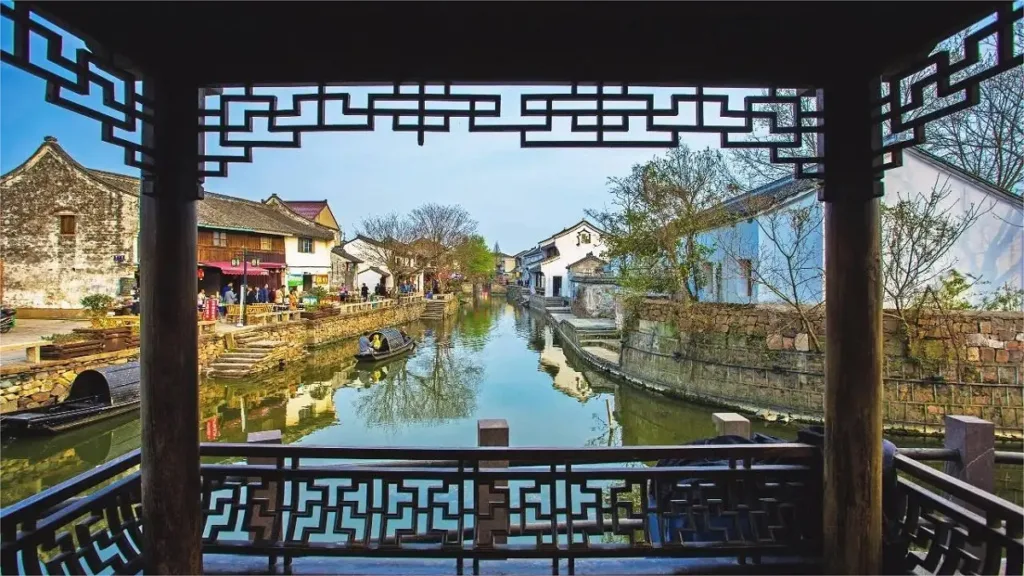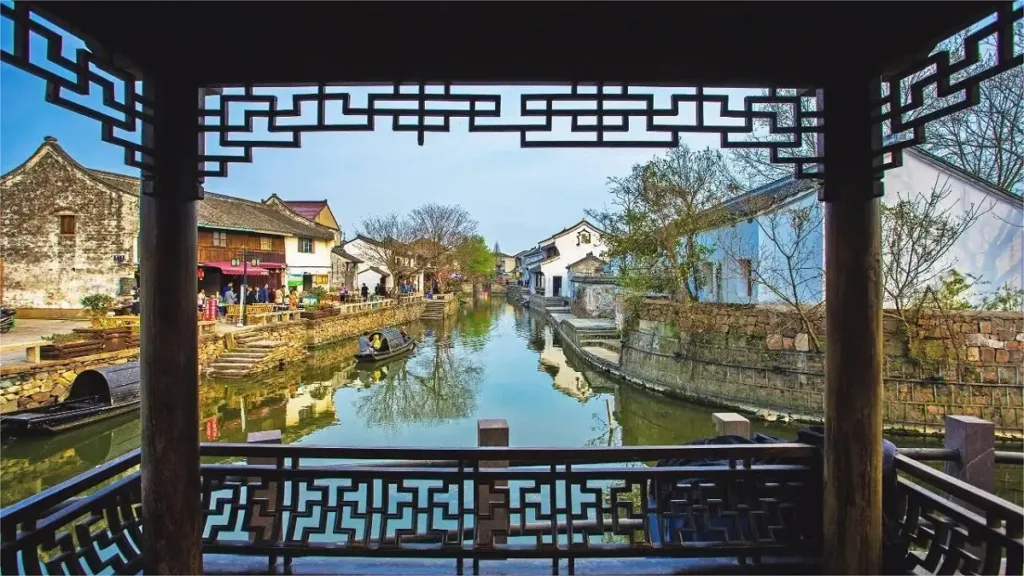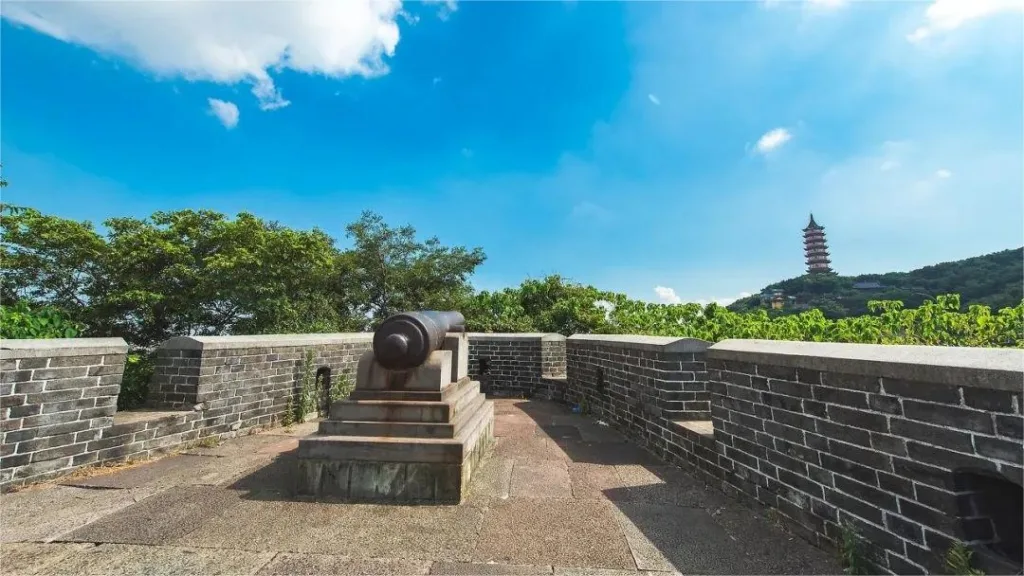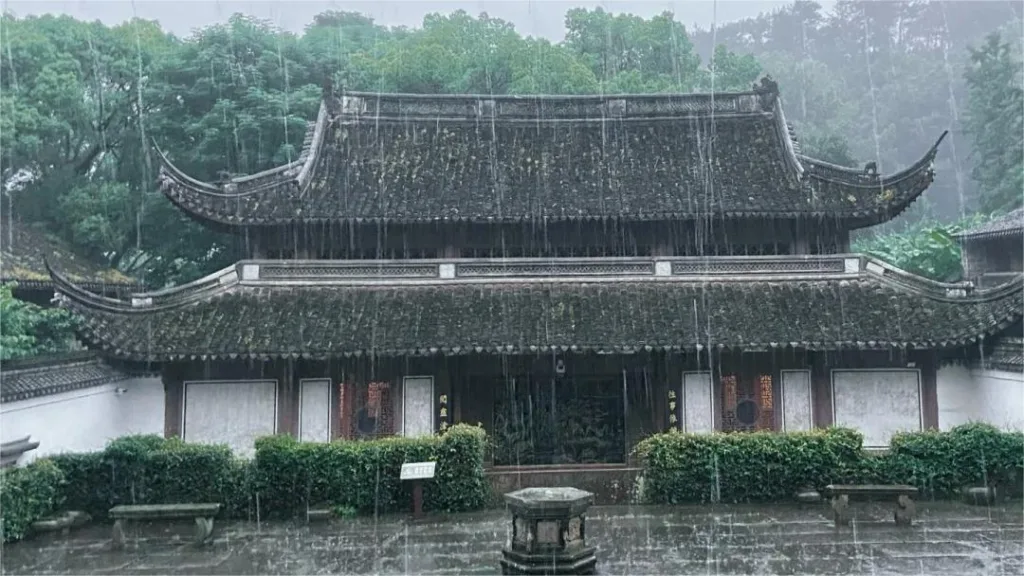明河古镇 - 门票、开放时间、位置和亮点


Minghe Ancient Town (鸣鹤古镇) is situated in the southeast of Cixi, Ningbo, Zhejiang Province, and was established during the Tang Dynasty, over 1200 years ago. This ancient town boasts a rich history and cultural heritage, particularly in traditional Chinese medicine, religious customs, celadon porcelain, sea salt production, and Confucian merchant culture. It embodies the charm of the Jiangnan water towns with its picturesque scenery, reminiscent of the beauty found in Suzhou. Strolling through its ancient streets and alleys feels like stepping back in time to an era of prosperity. Historical landmarks such as the Jinxian Temple, the Traditional Chinese Medicine Museum, the Zoumalou (a type of tower), and the silver shops bear witness to the town’s glorious past.
Moreover, Minghe Ancient Town is renowned as one of the birthplaces of Chinese traditional medicine culture. Many famous Chinese medicine pharmacies, such as Tongrentang in Beijing, Zhenyuantang in Shaoxing, and Yew Tongrentang in Wenzhou, originated from here. The town’s Traditional Chinese Medicine Hall showcases the essence of Chinese medicine culture, allowing visitors to appreciate not only the beauty of the ancient town but also the profoundness of traditional Chinese medicine culture.
目录
基本信息
| 预计游览时间 | 2 - 3 小时 |
| 票价 | 免费 |
| 开放时间 | 全年每天 24 小时 |
| 电话号码 | 0086-0574-63671996 0086-0574-63671989 |
地点和交通
Minghe Ancient Town is located in the southern part of Guanhaiwei Town, Cixi City, Ningbo City, Zhejiang Province, China. To get there, you can take bus Cixi 205, Cixi 226, or Cixi 310, and get off at Minghe Bus Station (鸣鹤车站).
Highlights of Minghe Ancient Town
Jinxian Temple

Jinxian Temple, originally constructed during the flourishing period of Buddhism in the Southern Dynasty of Liang (approximately between 535-545 AD), is nestled against Yuhuangshan Mountain and faces Baiyang Lake. Situated on the shores of Baiyang Lake in Minghe Ancient Town, Jinxian Temple is renowned for its picturesque setting, earning it the reputation of being a place where the mountain and the lake converge in beauty. With a history spanning over 1400 years, Jinxian Temple has played a significant role in the region’s history. In 1942, during the resistance against Japanese invasion, the Third Zone North Guerrilla Headquarters was established here, making the temple an important site for anti-Japanese activities. The surrounding scenic spots, characterized by mountains and lakes, contributed to the town’s former glory.
Traditional Chinese Medicine Museum

Minghe Ancient Town owes its prosperity not only to salt but also to traditional Chinese medicine. Since the Ming and Qing Dynasties, it has been regarded as the birthplace of China’s traditional medicine industry. It is said that “the talents of the Chinese medicine industry gather in Zhejiang Province, and Cixi leads Zhejiang, with Minghe leading the way.” The Traditional Chinese Medicine Museum, located in the lakeside square, features exhibits from over 150 renowned traditional Chinese medicine brands. Many of these brands were founded by individuals from Minghe or by Minghe natives who established famous pharmacies elsewhere. For instance, during the Qing Dynasty, two major Chinese medicine shops, “Beijing Tongrentang” and “Nan Zhongdetang,” were established by the Le family and the Ye family, respectively, in Minghe.
24-Room Residence

The 24-Room Residence, constructed by Ye Cifeng, son of the renowned traditional Chinese medicine merchant Ye Xinpei, during the 14th year of the Jiaqing reign (approximately 1809 AD), boasts a history of over 200 years. This residence comprises seven units with two floors, totaling 24 rooms. Surrounding the building are corridors providing access from all sides, allowing for smooth passage even for horse riders. The interior of the building is exquisitely crafted, with delicate carvings of auspicious symbols such as flowers, mandarin ducks, and flower baskets adorning the lintels. The doors, windows, and staircases are all adorned with floral patterns, and the walls feature brick-carved floral windows, as well as depictions of dragons, phoenixes, and bats.
Ancient Streets

Minghe Ancient Town is primarily composed of three main streets: Upper Street, Middle Street, and Lower Street. Among them, Middle Street stands out as the most prosperous, having been the heart of Minghe’s glory for centuries. Stretching approximately 1500 meters, it was once the bustling commercial center of the area. Since the Song Dynasty, it has hosted markets, with market days falling on the first, third, fifth, and eighth days of the lunar month, serving as vital hubs for agricultural and sideline products in the region. In the early years of the Republic of China, Minghe Ancient Town was a crucial hub for the distribution of the “Three Whites” (cotton, white cloth, and rice) in Cixi. At that time, there were over 200 boats moored in the street river. While the old streets may not be as vibrant as they once were, they still exude the charm of the ancient town, allowing visitors to experience its historical ambiance.
Penggong Temple

Penggong Temple is dedicated to Peng Shao, who was from Putian, Fujian Province. In the Ming Dynasty, he became a jinshi (a successful candidate in the imperial examination) during the Tian Shun period (1457 AD). During the Hongzhi reign, he served as the Assistant Minister of Punishments and concurrently as the Inspector of Salt Administration in Zhejiang Province. He defied popular opinion to reform the salt industry, eliminate malpractices, expel salt monopolists, and replace corrupt salt officials. He promised that future generations of salt workers could continue their studies, restoring confidence and motivation to the salt fields, and was revered by the salt workers as a benefactor. In the newly built temple, besides clay statues commemorating him, there are also “Eight Salt Boiling Scenes” drawn by Peng Shao himself on the walls of the main hall. On the twelfth day of the sixth lunar month, Pengong’s birthday, people offer incense and make devout offerings to honor him.
National Medicine Hall

Also known as Chongjing Hall, National Medicine Hall is the birthplace of Minghe’s Chinese medicine industry. Covering an area of 1619 square meters, it is divided into two parts: renovation and reconstruction, with a total construction area of 1806 square meters, including 786 square meters for renovation and 1020 square meters for reconstruction. Above the gate of Chongjing Hall, there is an inscription “Residing in Benevolence and Righteousness”, with its ancestor being Ye Xinpei, the founder of the Wenzhou Ye Tongrentang pharmacy. During the Cultural Revolution, it was used as a Minghe educated youth factory. The development and construction of the “Chinese Medicine and Chinese Medicine” sector have led to the establishment of the “Shanghai National Medicine Hall Minghe Branch”, which is a comprehensive medical institution offering services such as traditional Chinese medical diagnosis and treatment, health care, health management, and academic exchanges.
Other Attractions in Ningbo Suburbs

Qiantong Ancient Town

Zhaobao Mountain

保国寺